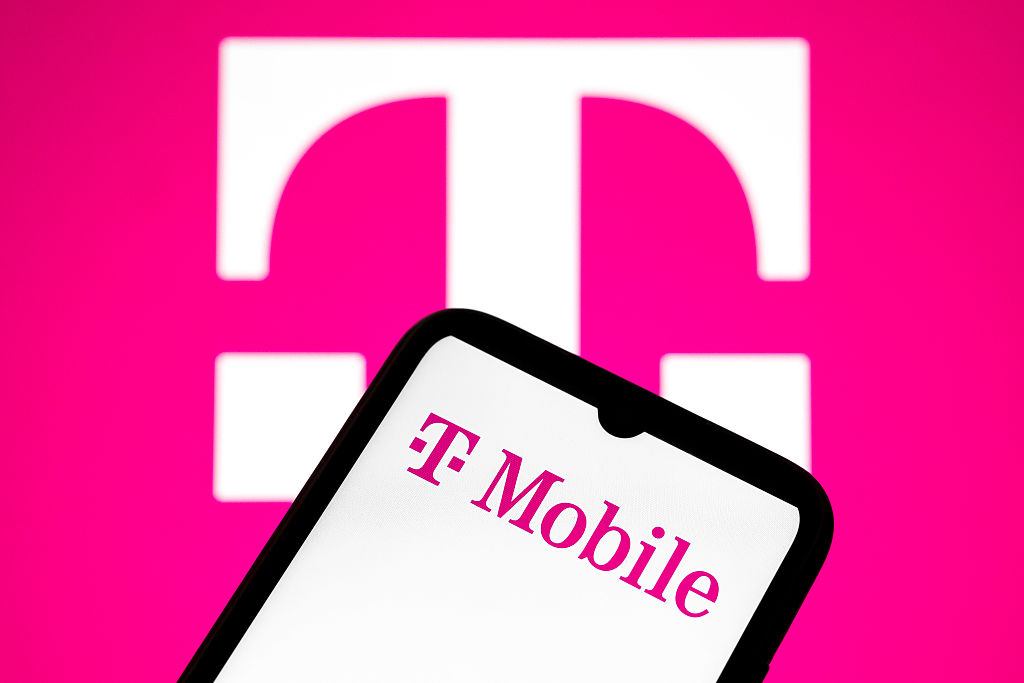Briggs & Stratton isn't in a sexy business. It's the world's largest maker of air-cooled gasoline engines of the kind that are found in lawn mowers and snow throwers. Because of the weak U.S. economy and depressed housing market, shares of Briggs & Stratton (symbol BGG) have lost two-thirds of their value in the past three years.
Over the same period, however, the company's 88-cent-a-share dividend has remained unchanged. As a result, Briggs's stock now yields a mouth-watering 6.3%. That's twice the yield of the overall stock market and more than double the current return of ten-year Treasury notes.
Thanks to the brutal bear market, Briggs is hardly alone in the high-yield club. As of November 25, according to Yahoo, 236 U.S.-traded stocks with market values of $1 billion and up yielded 6.0% or better (Briggs's market capitalization is $697 million).
From just $107.88 $24.99 for Kiplinger Personal Finance
Become a smarter, better informed investor. Subscribe from just $107.88 $24.99, plus get up to 4 Special Issues

Sign up for Kiplinger’s Free Newsletters
Profit and prosper with the best of expert advice on investing, taxes, retirement, personal finance and more - straight to your e-mail.
Profit and prosper with the best of expert advice - straight to your e-mail.
The list is filled with financial stocks, foreign companies, energy royalty trusts and unusual real estate investment trusts (REITs). Some of the yields are astounding: Duke Realty (DRE), 23.8%; Gannett (GCI), 19.3%; Hartford Financial Services (HIG), 16.8%; Seagate Technology (STX), 10.6%; Harley-Davidson (HOG), 7.7%.
The lure of a huge dividend payout is hard to resist. If you buy a stock like Briggs at its November 26 close of $14 and the stock climbs a mere buck over the course of a year, you've earned roughly 13%. If the stock simply stands still, you've captured the attractive yield.
But buying high-yield stocks is hardly risk-free, especially with the economy in the midst of what is shaping up to be a severe recession. At issue is whether companies will have to pare back dividends to conserve cash. So far in 2008, about 10% of the companies in Standard & Poor's 500-stock index, including Citigroup and General Motors, have cut or suspended their dividends.
To determine the sustainability of a payout, it's useful to compare the dividend with a company's cash flow, the amount of cash a company actually generates from its operations. You calculate cash flow by adding depreciation and other noncash charges to a company's after-tax profits. Out of cash flow comes the money to pay for capital expenditures, debt repayment, share buybacks and dividends.
For example, when Briggs & Stratton upped its dividend to 88 cents a share in 2006, it was generating much more cash flow per share than it is now. But even the reduced amount of cash that Briggs generated in the fiscal year that ended last June -- $1.35 per share, according to Value Line -- was easily enough to cover its dividend. Value Line expects cash flow to rise to $2.30 per share in the current fiscal year. Analysts who follow Briggs -- and the company itself -- say the dividend is safe.
Beyond cash flow, pay attention to a company's debt level, says Josh Peters, editor of Morningstar's DividendInvestor newsletter. This is especially crucial for REITs, which typically carry a lot of debt. As Peters notes, "Nobody's standing around" waiting to refinance REIT debt.
But even high cash generation and low debt may not guarantee dividend security. Companies may cut or eliminate a dividend to preserve cash to help weather the storm or to build up reserves for acquisitions. To guard against getting blindsided, look for companies with long histories of preserving or, better yet, increasing their dividends.
Finally, tread gingerly with high-yielding financial companies, especially those targeted by the Fed's rescue program. You can bet they won't be increasing dividends anytime soon, and they may be under extra pressure to cut dividends as the price for benefiting from Uncle Sam's largesse.
In addition to Briggs & Stratton, here are four other high-yielding companies, none of them REITs, trusts or partnerships, that look attractive and whose dividends appear to be secure:
General Electric (GE). It seems inconceivable that the giant conglomerate, which has raised its dividend 32 years in a row, would cut the payout. True, GE derived some 45% of its profits from financial services in 2007. But, barring an economic collapse, cash flow should remain well above the $1.24-per-share annual payout. At GE's November 26 close of $16.19, the stock yields 7.7%.
Diageo (DEO). Alcohol sells in just about any economy, so profits for the London-based liquor, wine and beer company should hold up in the year ahead. Diageo is well-entrenched in the U.S., the world's most profitable liquor market, with products such as Johnnie Walker scotch whiskies, Captain Morgan rum and Jose Cuervo tequila. Diageo's American depositary receipts, at $56.16, yield 4.7%.
Mattel (MAT). Retailers may get a lump of coal this holiday season rather than profits, but the toymaker should have a merry 2008. You can bank on tried-and-true toys, such as Elmo and Barbie, to keep the cash and dividends flowing. Mattel shares have dropped 55%, to $13.47, since April 2007. They yield 5.6%.
Microchip Technology (MCHP). It's rare to find high-yielders among high-tech stocks, but that's what you get with Microchip. At $18.86, down from $43 in June 2007, the shares yield a tempting 7.0%. Microchip makes computers-on-a-chip, which are found in everything from toys to remote controls to car parts. The company paid its first dividend-4 cents a share-in 2002. It's now paying at a rate of $1.33 per share.
Profit and prosper with the best of Kiplinger's advice on investing, taxes, retirement, personal finance and much more. Delivered daily. Enter your email in the box and click Sign Me Up.

-
 The Retirement Donor's Checklist: Key Deadlines by Gift Type
The Retirement Donor's Checklist: Key Deadlines by Gift TypeRetirees have some charitable contribution options that can help avoid spikes in income from RMDS and capital gains.
-
 Cooler Inflation Supports a Relief Rally: Stock Market Today
Cooler Inflation Supports a Relief Rally: Stock Market TodayInvestors, traders and speculators welcome much-better-than-hoped-for core CPI data on top of optimism-renewing AI earnings.
-
 Are T-Mobile's Prepaid Perks a Home Run or a Strikeout?
Are T-Mobile's Prepaid Perks a Home Run or a Strikeout?T-Mobile's prepaid lineup promises MLB.TV, T-Mobile Tuesdays and hotspot data. But do the perks make it worth switching?
-
 If You'd Put $1,000 Into Coca-Cola Stock 20 Years Ago, Here's What You'd Have Today
If You'd Put $1,000 Into Coca-Cola Stock 20 Years Ago, Here's What You'd Have TodayEven with its reliable dividend growth and generous stock buybacks, Coca-Cola has underperformed the broad market in the long term.
-
 If You Put $1,000 into Qualcomm Stock 20 Years Ago, Here's What You Would Have Today
If You Put $1,000 into Qualcomm Stock 20 Years Ago, Here's What You Would Have TodayQualcomm stock has been a big disappointment for truly long-term investors.
-
 If You'd Put $1,000 Into Home Depot Stock 20 Years Ago, Here's What You'd Have Today
If You'd Put $1,000 Into Home Depot Stock 20 Years Ago, Here's What You'd Have TodayHome Depot stock has been a buy-and-hold banger for truly long-term investors.
-
 What the Rich Know About Investing That You Don't
What the Rich Know About Investing That You Don'tPeople like Warren Buffett become people like Warren Buffett by following basic rules and being disciplined. Here's how to accumulate real wealth.
-
 If You'd Put $1,000 Into Bank of America Stock 20 Years Ago, Here's What You'd Have Today
If You'd Put $1,000 Into Bank of America Stock 20 Years Ago, Here's What You'd Have TodayBank of America stock has been a massive buy-and-hold bust.
-

 If You'd Put $1,000 Into Oracle Stock 20 Years Ago, Here's What You'd Have Today
If You'd Put $1,000 Into Oracle Stock 20 Years Ago, Here's What You'd Have TodayORCL Oracle stock has been an outstanding buy-and-hold bet for decades.
-
 How to Invest for Rising Data Integrity Risk
How to Invest for Rising Data Integrity RiskAmid a broad assault on venerable institutions, President Trump has targeted agencies responsible for data critical to markets. How should investors respond?
-
 If You'd Put $1,000 Into Sherwin-Williams Stock 20 Years Ago, Here's What You'd Have Today
If You'd Put $1,000 Into Sherwin-Williams Stock 20 Years Ago, Here's What You'd Have TodaySherwin-Williams stock has clobbered the broader market by a wide margin for a long time.
